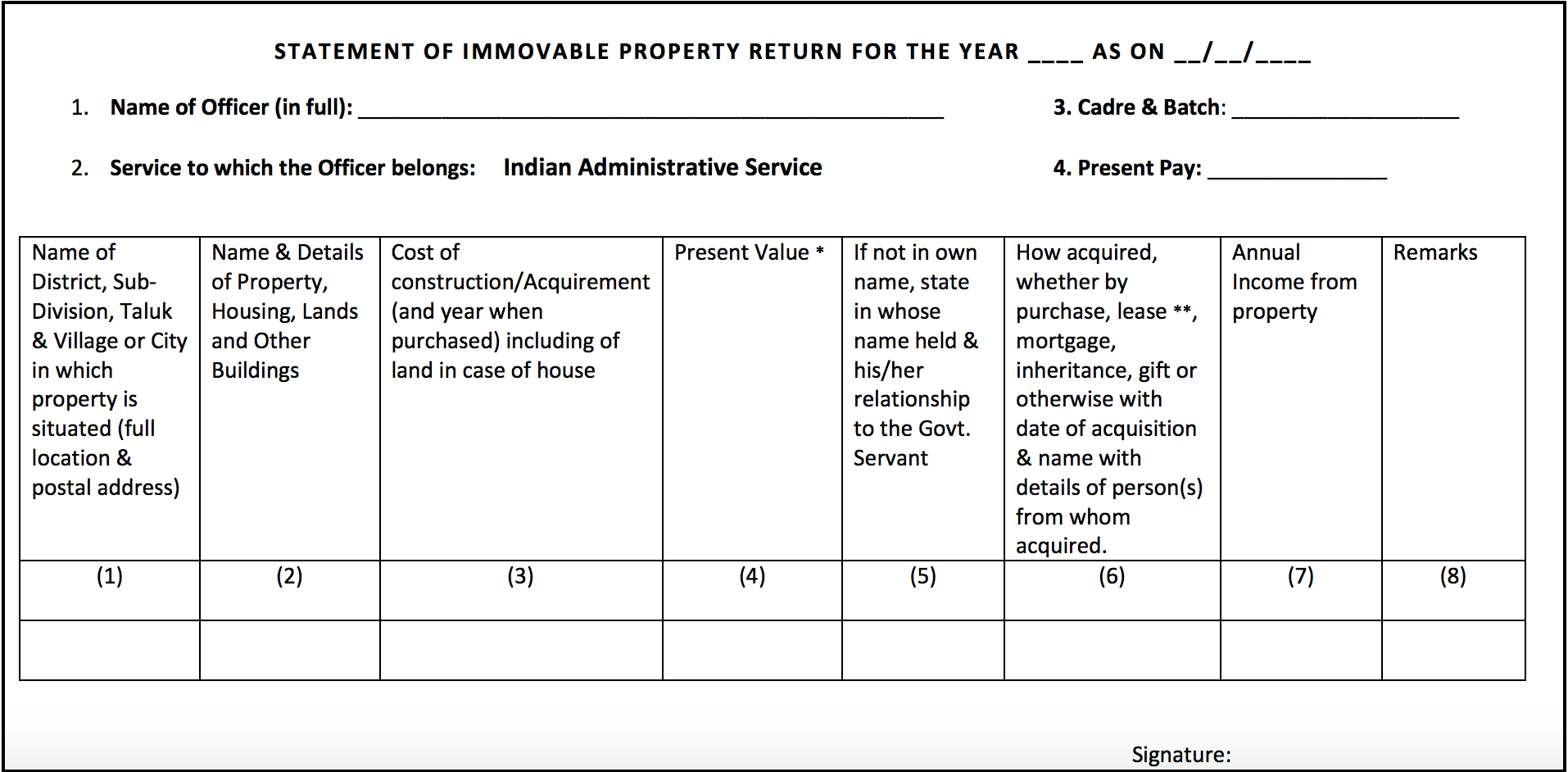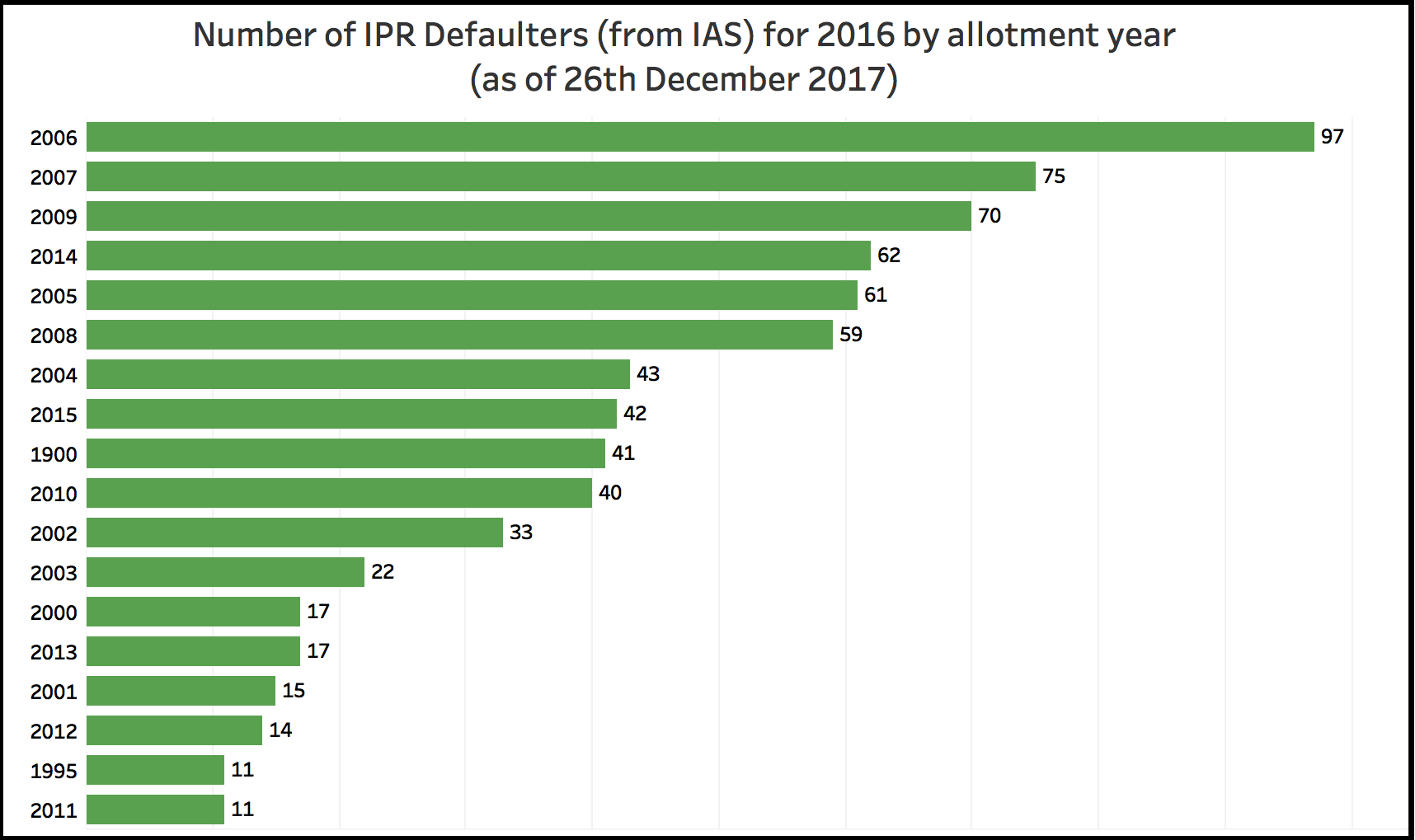[orc]While the proportion of IAS officers submitting their Immovable Property Returns (IPRs) every year has improved significantly, hundreds of officers still default on IPR submission. Most of the defaulters are the younger officers appointed after the year 2000.
The Department of Personnel & Training (DoPT) has recently written to all other government departments reiterating its earlier instructions issued in the year 2011, regarding submission of ‘Immovable Property Returns’ (IPR) by IAS officers. The latest letter highlights the decision taken in 2011 that vigilance clearance will be withheld for those IAS officers who fail to submit their IPR.
What is IPR?
As per rule 16(2) of the AIS (Conduct) Rules, 1968, all IAS officers are required to submit their IPR (as of 1st January) latest by 31st January every year. The IPR is supposed to be filed (uploaded online) in a specific format. Even if an officer has no property to report, a NIL return has to be filed.

For instance, below is the first page of the IPR filed by the Cabinet Secretary, Pradeep Kumar Sinha for the year 2017.
 Denial of Vigilance Clearance for default
Denial of Vigilance Clearance for default
The latest letter from DoPT makes it clear that non-submission of IPR on time would result in the denial of vigilance clearance. Vigilance clearance for IAS officers is mandatory for many purposes such as posting on foreign assignments, promotions, approval for foreign visits, approval for foreign trainings etc. This decision of denial of vigilance clearance was first taken in the year 2011.
Submission rate improved over the years
As per data available on the DoPT website (till 26th December 2017), the submission rate of IPRs has substantially improved over the years. For the year 2011, close to 30% of the IAS officers did not submit their IPRs. The percentage of defaulters has gone down substantially over the years and in 2017, only about 5.65% IAS officers have not submitted their IPRs. As per data available, out of 5012 IAS officers in service for the year 2017, 4729 have submitted their IPRs while 283 have defaulted. It has to be noted that the deadline for the year 2017 ended on 31st January 2017.
 More Younger Officers default than the older ones
More Younger Officers default than the older ones
If one looks at the detailed numbers on who is defaulting, interesting trends emerge. Most defaulters for the year 2017 are the officers of the 2007 batch. Twenty-five (25) from the 2007 batch did not submit their IPRs followed by 17 each from the 2005 & 2008 batches. More than 60% of the defaulters for the year 2017 are the officers appointed after the year 2000. Among the various cadres, 30 officers belonging to the Rajasthan cadre have defaulted for the year 2017, the highest for any cadre in the country. This is followed by 29 from the AGMUT cadre and 28 from the Andhra Pradesh cadre. Only one officer each from Maharashtra & Himachal Pradesh cadre have defaulted in their IPR submission.
 Even for the year 2016, the situation is no different. 97 officers of the 2006 batch have defaulted on IPR submission, the highest for any batch. This is followed by 75 from the 2007 batch and 70 from the 2009 batch. For the year 2016, more than 77% of the defaulters were those appointed after the year 2000. Most of the defaulters for the year 2016 belong to the Uttar Pradesh cadre (118 of them) followed by 79 from the Rajasthan cadre.
Even for the year 2016, the situation is no different. 97 officers of the 2006 batch have defaulted on IPR submission, the highest for any batch. This is followed by 75 from the 2007 batch and 70 from the 2009 batch. For the year 2016, more than 77% of the defaulters were those appointed after the year 2000. Most of the defaulters for the year 2016 belong to the Uttar Pradesh cadre (118 of them) followed by 79 from the Rajasthan cadre.



